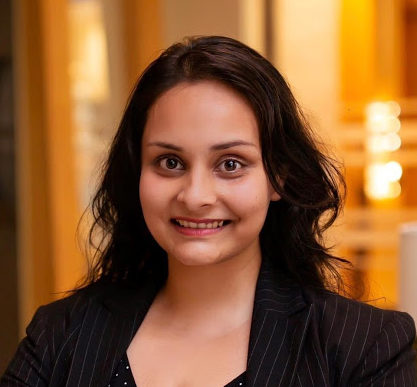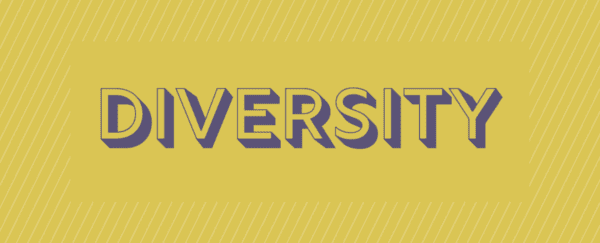Authors’ Note – Indrani is a working professional with close to six years of experience, working in software development in India. She is all set to commence her Masters program at Georgia Tech in Spring 2021. Sreyoshi has completed her doctoral degree in Engineering Education from Virginia Tech in 2017 and has since mentored several students transitioning from undergrad or industry to higher education. Together, the authors reflect on strategies that they found useful and which might help prospective graduate students. They also share additional strategies to help navigate challenges posed by distance and exacerbated by the pandemic.
They welcome comments and encourage those going through the admissions cycle to reach out, should they need help, mentorship, or even a second set of eyes at application materials. You are not alone, your SWE network has your back!
2020 has not been without its many challenges, affecting each and every individual across the planet, albeit in varying degrees. The whole world is still grappling with the deadly pandemic, and we are beginning again, to see rapid surges in infection rates as we enter the last month of the year. For prospective Graduate students, the year poses unique and unprecedented challenges, in addition to typical considerations. Preparing for, applying to, and finally planning to attend graduate school is a long-drawn process which often takes well over several months of dedicated planning and disciplined execution.
The following are some strategies that may be useful to those considering higher studies, but are unable, unsure or even afraid to take the next steps towards this goal.
1. Conduct a SWOT analysis
The first step in considering graduate school or higher education is to answer why it is important for your professional growth, and how it will help your career. Graduate education is time and resource intensive, and before making the plunge, it may be worthwhile to weigh the pros and cons. A SWOT (Strengths, Weakness, Opportunities, Threats) analysis is a great tool to exploit, when weighing out pros and cons. Popular since the 1960s, SWOT analysis was primarily a way for organizations to plan and strategize for their future. Individuals considering graduate education can borrow this technique to help themselves understand what they seek from higher education, and what are some potential areas that they would need help in.
Activity – Using your preferred technology (yes! Good ole pen and paper count!), list out your:
a) Strengths (i.e., What makes you ready/good fit for higher education – e.g., years of practical experience in the field or passion for a particular area of research),
b) Weaknesses (i.e., What areas would you need help/coaching/mentorship in? – e.g., help writing a statement of purpose or narrowing down universities to apply to),
c) Opportunities (i.e., What external opportunities can you leverage? – e.g., funding opportunities at universities, emphasis on work-life balance, scholarship options, etc.), and
d) Threats (i.e, What are potential barriers that you would have to navigate? – e.g., relocation costs, application costs, the ongoing pandemic!)
As a software professional with over 6 years of experience under her belt, Indrani knew that a Masters degree could potentially be a good next step for her career trajectory. She used the initial few weeks to introspect. She reflects, “My strengths helped me understand what my baseline was and what I needed to build on to reach my goal. Similarly, assessing my weaknesses helped me zero in on areas which need more concerted effort. Listing down the opportunities made me realise that there are options and possibilities to balance work and life simultaneously, which was important for me. Understanding and evaluating threats helped me plan for the future, such as keeping my finances well under control, as I thought about applications and relocation. This list allowed me to form criteria which helped me select universities and programs that best aligned with my expectations and inclinations.”
2. Visualize your Timeline
A critical characteristic of the application process is that it is one that is (often, painstakingly) long-drawn. Applicants typically begin prepping for and applying in Fall, for admission in Fall beginning the following year. Since the process is long, and involves several steps, it is important to visualize one’s timeline and mark out crucial dates and times important to the application process. It is helpful to begin by first narrowing down on your universities and programs of choice, and work with their application deadlines to backtrack into creating some time-markers for your own application journey. Information about what needs to be included in the application packet is usually available on the universities’ website. Once you have a list of all that is required from applicants, you can use it to break down the time between the present and the application deadline, and assign yourself tasks along the way to help gather the elements needed to build your application packets.
Activity – Using your preferred technology again, list out everything you need done to get your application packet ready. Leading up to the final date of submission of the application packet some of the important dates that you may need to plan for are:
- dates for taking the GRE/GMAT/TOEFL tests (if required)
- dates to reach out to and add recommenders into the system (typically allowing 1 month for them to write you a letter)
- time to reach out to your previous universities/schools for transcripts, scholarship application deadlines, etc.
Finally, setting up calendar reminders using Outlook or Google Calendar or time-keeping technology of choice, for these dates will allow you to keep yourself accountable and on track and it is likely that you will not find yourself in a last minute confused haze of struggling to get documents and letters ready for a submission deadline.
Thinking about her own timeline, Indrani reflects, “Drafting a statement was the hardest part for me. After writing several drafts of the SOP, my final version was ready just a day before submission! Engaging your reader is important for SOPs, but so is narrating your story and articulating how the program will augment your career. I referred to several SOP’s online to get an idea about how to best draft my SOP. But every story is different, and I realized that one has to pen their own story themselves. An important takeaway from this part for me was that a well-articulated SOP comes only after several drafts, and multiple re-reads and edits. It is important to factor in an adequate number of days to ensure you have the time you need to craft an engaging and meaningful statement. Keep in mind too that there is an ongoing pandemic, and factor for reduced productivity some weeks, as you draft your timelines, to cater to life.”
3. Expand and Lean on your Network
While applying to universities, one’s network is one’s biggest assets. It is important to grow and leverage one’s professional network and also lean on it when required. One’s network includes the individuals that make up one’s professional circle including colleagues, mentors, teachers, etc. Along with your network, also assess the resources that may be available to you. If you are reading this, you are likely part of the Society of Women Engineer (SWE) network, and you have at your disposal resources such as mentors, to help you as you apply for admissions, Speaker series and talks hosted by Grad SWE for a glimpse at graduate student life, etc. Assessing, understanding and fully exploiting resources at your disposal is a skill that applicants need to hone as they go through the admissions cycle. It is important to note that your network will be important to you throughout your professional journey – from application to admissions through graduation and beyond. Connecting with and leveraging from a diverse set of individuals can not only help make your application and admissions journey easier, but also serve as a wonderful resource throughout one’s profession.
Activity – Go back to your list from your SWOT analysis, and your timeline. Mark out the key steps that you anticipate needing help in. Based on these broad steps, then identify individuals from whose expertise you may benefit. For example, if you are undecided about applying to a program and want to know about career prospects beyond graduation, reach out to prospective students or alumni at that program. Select a networking medium of your choice, e.g., LinkedIn, and reach out and connect with individuals who you can learn from, or who may have the expertise to help you in your application process. This may include looking up current students and alumni of the programs that you are applying to, professionals and academics in the field, recruiters and headhunters, and colleagues and fellow aspirants of the higher education journey. The broader and more diverse your network, the higher is the probability of you finding answers to the different questions you are bound to have along your journey.
Indrani recalls her experience of leaning on her network for help through the various parts of the application process, but particularly in navigating online and at-home test-taking due to the pandemic. She reflects, “I reached out to my network and learned about several free online resources available to prepare for these online exams. For instance, I learned that the ETS website also offers MOCK tests which helped me tremendously to gage my performance and preparation. I was also prepared for technical glitches, since that had been discussed in the forums, I was part of. Patience and self-confidence were my primary driving factors while appearing for the standardized tests from home, and I was able to build upon these thanks to my network, including mentors and colleagues who had either done this before, or were going through the process along with me.
Every applicant’s journey is unique. However, each applicant does have to go through similar steps in the application process, and this article attempted to cover some strategies that may help those in different stages of the application, admission, and transition to Grad school cycles. The article also seeks to serve as a reminder for applicants going through this arduous process to prioritize self-care and redefine and recalibrate their productivity given the pandemic.
As you get ready to take the next big steps for your professional journey, what are some strategies that have worked for you?
Related content:
- How to Get Grad School Funding in STEM
- Top 10 Engineering Grad Schools in the U.S.
- Viewpoint: Graduate School: Overseas or at Home?
- Explore the Career Option of Graduate School
Authors
-

Dr. Sreyoshi Bhaduri is a SWE member and Vice President at SWE-NY. She currently leads Global People Research and Analytics at McGraw Hill, where she works on research leveraging employee data to generate data-driven insights for decisions impacting organizational Culture and Talent. She has interdisciplinary expertise spanning engineering, education, and statistics. Her research interests include assessing the impact and effectiveness of inclusion initiatives within the tech industry as well as employing innovative, ethical and inclusive mixed-methods research approaches using AI to uncover insights about the 21st century workforce. Learn more about her and get in touch at www.ThatStatsGirl.com.
-

Indrani Sen works as a software engineer at Tata Consultancy Services and will be starting her Master's in Computer Science at Georgia Tech from Spring'21. Indrani also has a Master's in Computer Application from Kalinga Institute of Industrial Technology, India. In her career as a software developer for 6 years, Indrani has worn multiple hats: from being an individual contributor to leading a team of junior engineers and mentor. Indrani has always been passionate about increasing representation of women in STEM. She volunteers at several global organizations to inspire, mentor and help more womxn to persist in STEM. Indrani is also a singer, and in her spare time, loves to explore and enjoy music from around the world.






